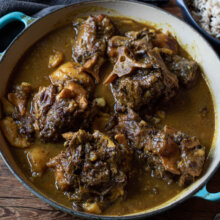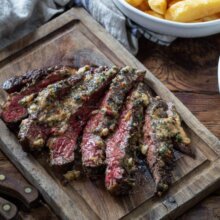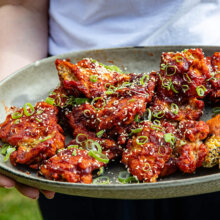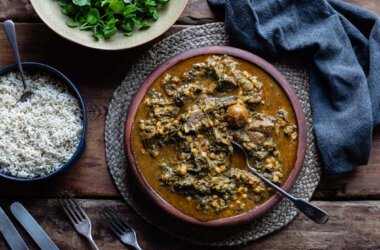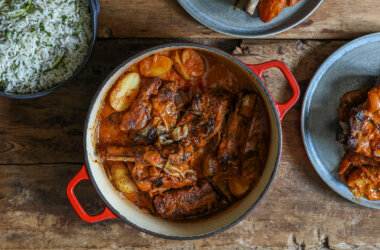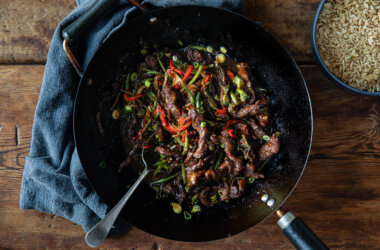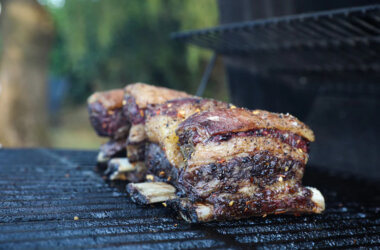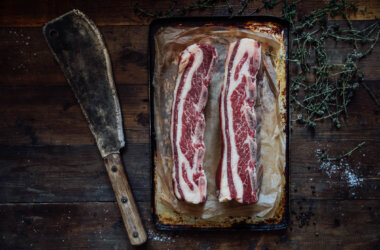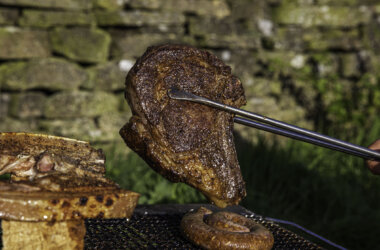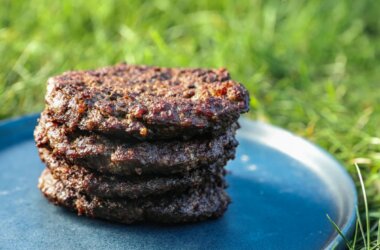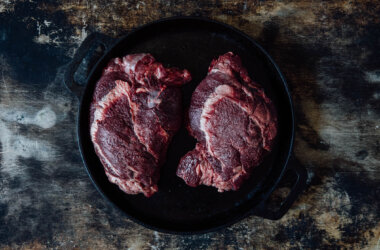Braised Pork Shoulder in Milk with Polenta & Crispy Sage: The shoulder is slowly braised until you can pull it apart with a spoon and a fork, given an unusual lift by the curdled milk. All sitting on a comforting, parmesan-fuelled, bed of polenta — that great stalwart of Northern Italian cooking.
This might sound a little strange if it is something that you have never come across before — it certainly blew my mum’s mind when I told her I was cooking it. But it is a traditional old method for cooking pork, although I think usually a loin, and returns a distinctive and pleasing flavour. As the milk curdles in the cooking process, it lends an almost cheesy tang to the pork, whilst its great friends sage and fennel are there to help add a more familiar edge.
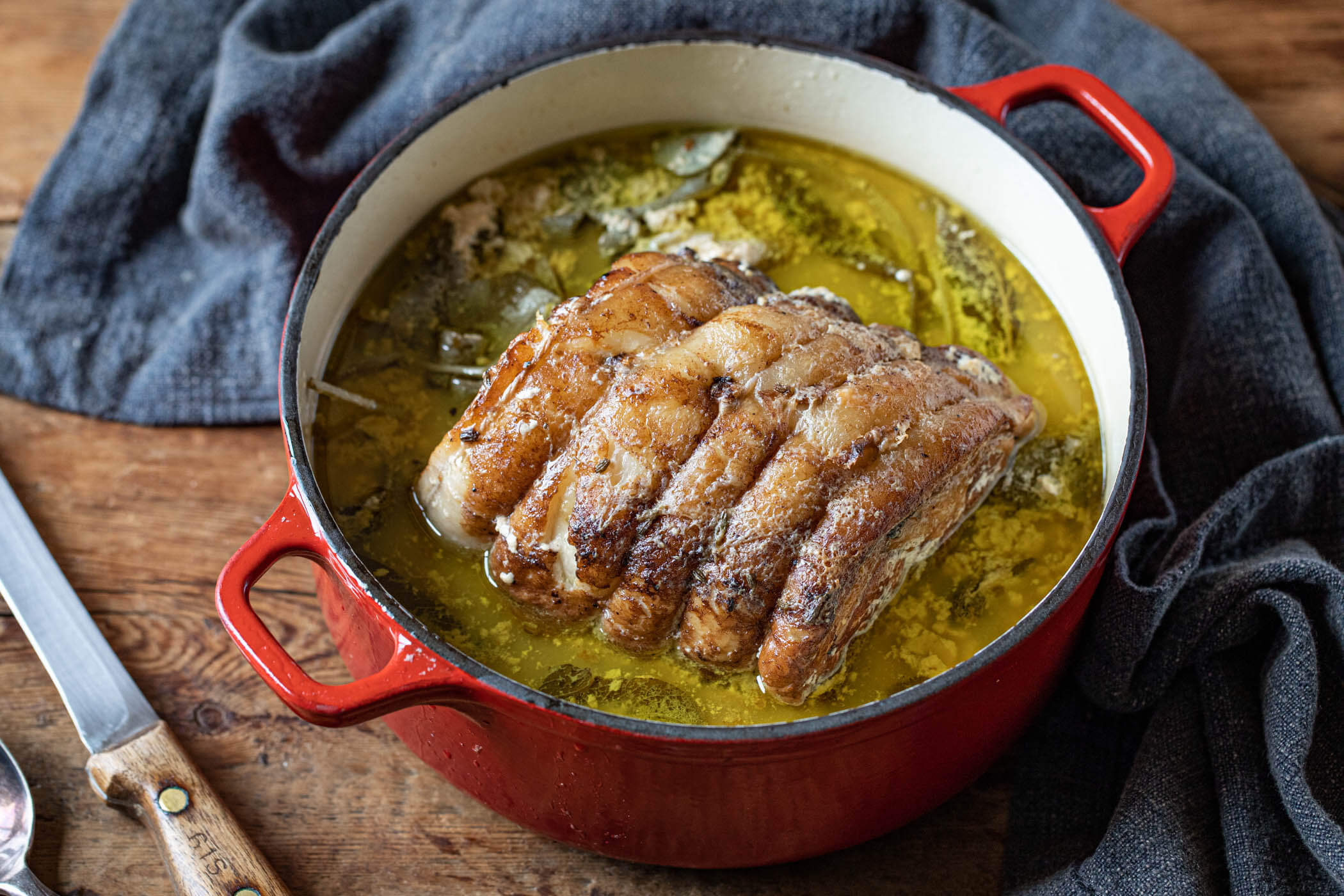
Serves 6-7
Ingredients
For the Pork
For the Polenta
- 450g coarse, good-quality polenta
- 2 litres water3 tbsp extra virgin olive oil
- 125g salted butter, cubed
- 150g Parmigiano-Reggiano, finely grated
For the Crispy Sage
- 20 fresh sage leaves, whole and picked from the stalks
- vegetable oil, for frying
Method
The pork shoulder will need a nice slow cook, so get it on first:
- Preheat your oven to 125°C.
- Find a casserole pot with a lid that fits and place it over a medium heat, with half a tablespoon of olive oil.
- Season the pork well with salt and black pepper and add it to the pan. We want to colour the fat off a little bit to start building the layers of flavour and also release some lovely pork fat into the pan. Colour the shoulder evenly on all sides and then the fennel seeds and garlic. Let them fry briefly in the fat before adding the milk, sage, lemon zest, and the remaining olive oil.
- Season the pan with salt and turn the heat down to low. It is relatively easy for the milk to catch and burn on the bottom of the pan — this will ruin the dish, so be wary.
- Let the milk come up to a simmer, fit the lid and place it in the oven. Set a timer for 4 hours.
- After 4 hours, remove the pan from the oven and check the meat by inserting a small knife into the joint. It should feel soft, as if with slightly more pressure, the whole thing might just fall apart. If it is still a little firm, then return it to the oven and check after another half an hour. Do not be alarmed by what you are seeing, the milk will have curdled and possibly not look too appealing, but it is all part of the plan, so go with it. If the shoulder is cooked, then leave to one side to rest and cool slightly.
For the polenta:
- In a large heavy bottomed pan, bring the water, plus a good pinch of salt, to the boil. Add the olive oil.
- Have a whisk to hand. Whisk the water and begin adding the polenta in a steady stream, whisking continuously. Once all the polenta is in, then turn the heat down as low as possible.
- Swap the whisk for a wooden spoon. Let the polenta cook on this low heat for about 45 minutes, stirring regularly. You will notice that it will thicken very quickly as the grains cook. If the heat is too high, then polenta can bubble and spit — like lava. Try to avoid this as it will be very hot and can burn.
- Add the butter and parmesan and stir continuously until both have melted completely. At this stage, it should, in terms of consistency, resemble a loose mashed potato. If it seems a little firm, then loosen with a splash of water.
- Keep the polenta warm until you serve. When the polenta is allowed to cool, it makes a good substitute for cement (don’t actually try to build anything with it), not what this dish calls for.
Just before serving:
- Heat about 250ml of vegetable oil in a pan — approximately an inch.
- Carefully dip the tip of a sage leaf in the oil to check its temperature. It should instantly begin to sizzle but not burn. About 170°C, if you have a thermometer.
- In batches, add the sage leaves to the oil. The leaves will sizzle quite aggressively at first, but will calm down fairly quickly as the moisture in the leaves evaporates, leaving us with a crispy finish. We are looking for a crispy, dark green leaf, not a burned one. If they are burning, then turn the heat down.
- Season with salt as they come out of the oil.To serve, remove the pork from the pan and pull it apart with a fork. Serve it on a good dollop of polenta, with a little of the cooking liquor. Adorn with crispy sage leaves and enjoy!
